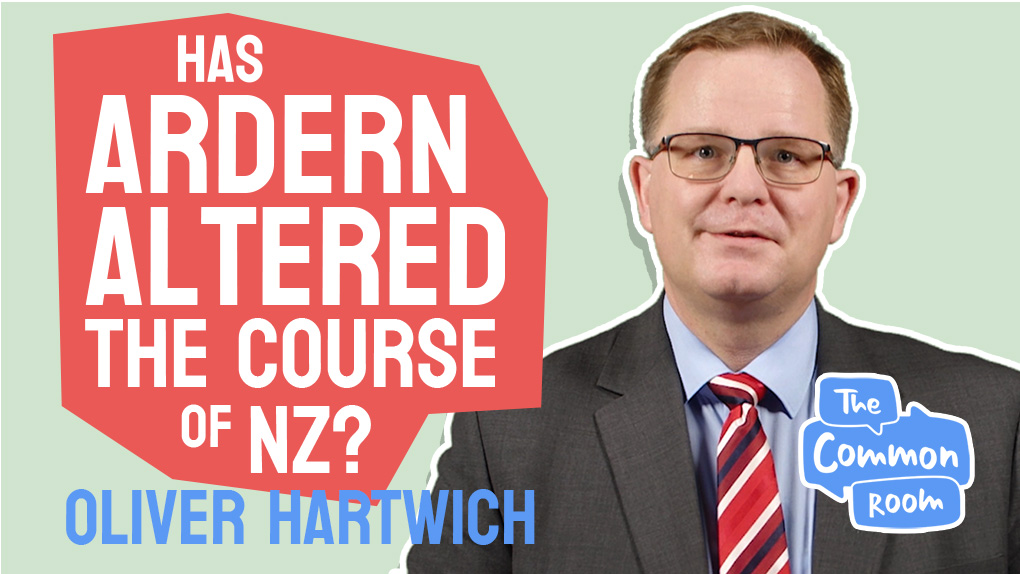Hipkins’ government enters election season in disarray
Graham Adams, Contributing Writer
10 August, 2023

The Prime Minister is beginning to look like a lame duck.
It has been a little over six months since Jacinda Ardern handed the prime ministerial reins to her friend “Chippy”, who publicly endorsed the policy retreat she had signalled in December. He dedicated himself to “bread-and-butter” issues and dismissed, or at least delayed, some of the government’s least popular policies — including hate-speech laws, the TVNZ-RNZ merger, and the social insurance scheme. However, he left co-governance in Three Waters and elsewhere untouched.
With the media rooting for him — including blithely ignoring the fact he had been a linch pin in Ardern’s Cabinet — Hipkins’ administration had an immediate bump in the polls. Suddenly Labour was back in the battle that Ardern had summarily abandoned in the New Year.
Six months later, the government is now polling below the numbers Ardern had reached before she resigned. In mid-January, before she quit, a poll conducted by Curia for the Taxpayers’ Union put Labour on 31.7 per cent while the same month Roy Morgan showed its support at 30 per cent.
This week, a Curia poll put Labour at 27.1 per cent while Roy Morgan last month had the party at 26 per cent.
Hipkins’ honeymoon period with voters and the media is now clearly over — which is hardly surprising given that Labour is in complete disarray, both in terms of policy and personnel.
Having lost four ministers — Stuart Nash, Michael Wood, Meka Whaitiri and, spectacularly, Kiri Allan, who was charged after crashing her ministerial car into a parked ute — Cabinet reshuffles are now the Prime Minister’s bread and butter.
Hipkins had to reshuffle David Parker as Revenue minister last month too after he had ruled out a wealth and capital gains tax under any government he leads. That decision so thoroughly “disappointed” Parker (not to mention supporters who expect a Labour government to energetically redistribute wealth) that he resigned from the portfolio.
The Prime Minister can no longer field a full ministerial team, with Cabinet numbers down from 20 to 18. The dearth of talent available to him has been made painfully evident by his giving a rookie minister the heavyweight Police and Justice portfolios just a few months after she entered Cabinet. Wags are suggesting that, on her current meteoric trajectory, Ginny Andersen could plausibly be leader of the Labour Party in a matter of months if it loses the election. Apparently, the sky’s the limit for the member for Hutt South.
Six months after his ascension to high office and two months before the election, Hipkins’ government is a wreck. Minor and major disasters have crowded in on him. Last week, Jo Luxton, Labour’s duty minister in the House, was caught out not knowing what Parliament was about to debate, leading to uproar in the chamber; the Minister of Health, Ayesha Verrall, sat on a damning report assessing the Māori Health Authority’s performance for months before it was finally made public last week to stinging criticism. The public also learned that the data to June on waiting times for hospital treatment won’t be released until the end of October, which conveniently means it won’t be publicly available before the election.
The widespread view that the government is profligate with taxpayers’ money and has allowed a culture of excess to infect the public sector was reinforced this week by news that the Ministry for Pacific Peoples spent nearly $40,000 on a farewell event for its outgoing chief executive — who was merely shifting to another ministry.
Desperate times call for desperate measures — and Hipkins now appears to be trying to outbid National after Christopher Luxon announced plans for a $24 billion national road-building and public-transport programme. It remains a mystery why Hipkins thinks his proposed $45 billion new crossing for Auckland’s Waitemata harbour — involving two three-lane tunnels for vehicles and a 21km light-rail tunnel between Albany and the CBD — might be a vote winner. Labour has already shown itself to be inept at implementing major infrastructure projects, whether it is the KiwiBuild promise of 100,000 houses or constructing a light-rail line from Auckland’s CBD to Mt Roskill, which Ardern said in 2017 would be finished by 2021.
As National’s transport spokesperson, Simeon Brown, pointed out, Labour has spent $140 million on consultants for that project so far yet still hasn’t even developed a business plan, let alone laid any track. Hipkins might as well have announced a mission to put the first woman on Mars for all the credibility Labour has in spruiking infrastructure projects.
Furthermore — and much to the outrage of Labour’s green supporters who fret about “global boiling” — it represents a screeching U-turn from the party’s longstanding aim of prising unwilling drivers out of their cars by not pandering to them by providing more and better roads.
To add to the impression of Cabinet dysfunction, the Minister of Finance, Grant Robertson, told TVNZ’s Q&A on Sunday: “It is not going to be possible to make big promises” this election.
On Newshub Nation in the weekend, Māori Development minister Willie Jackson glossed the government’s parlous state by claiming that anyone would have expected National to be 10 points ahead of Labour in the latest Newshub-Reid Research poll after the party’s “nightmare” over the past few months. “But here we are,” he said, “right in the race” — with Labour on 32.3 per cent and National on 36.6.
Jackson’s surprise at the results no doubt echoed that of many watching the programme — as well as its host, Rebecca Wright, who said all she could see was “a dumpster fire burning in the Cabinet room and Chris Hipkins waving at the smoke”.
What should seriously worry Jackson and Labour’s strategists is that a clear majority of voters consistently say the nation is on the wrong track. Last week, the Newshub poll also showed 62.1 per cent thought the government wasn’t concerned with issues that matter to Kiwis while just 29.8 per cent said it was.
Increasingly, Hipkins appears to have no clear idea of what he wants Labour to be or who it represents. Maintaining power has become his raison d’être. Even some of the party’s formerly ardent supporters are saying publicly that it needs to spend time in the political wilderness to reorient itself as a true Labour Party — rather than one that is led by “poll-driven fruitcakes”, to borrow David Lange’s phrase.
As Hipkins flails about trying to regain the initiative by announcing rushed policies — including fast-tracking three new wind farms that may not be approved — he is in danger of looking increasingly like a lame-duck Prime Minister.
In US politics, a “lame-duck” President refers to the end of a term in office after an election and before a successor is inaugurated. More generally, however, it means a leader who is reaching the end of their tenure with diminished authority — including being defied, disrespected or ignored by his or her subordinates — and being seen as largely ineffectual.
Napoleon said he “would rather have a general who was lucky than one who was good”. Hipkins got lucky with a mainstream media that fawned over him for several months in his role as down-to-earth “Chippy from the Hutt”. That luck now appears to have largely run out.
Given the mechanics of MMP, that is not to say he won’t be able to cobble together a government after October 14 with the support of the Greens and Te Pāti Māori. But it’s looking like an uphill battle.
Exactly what such a coalition might stand for is difficult to guess but the pressure will be intense for a wealth tax of some sort. What can be said with certainty is that a union of Labour, the Greens and Te Pāti Māori will readily agree on one topic: further embedding co-governance in law and policy, which will push New Zealand irrevocably along the path to an ethno-state.
Graham Adams is a freelance editor, journalist and columnist. He lives on Auckland’s North Shore. To receive pieces like this in your inbox subscribe to our newsletter.




